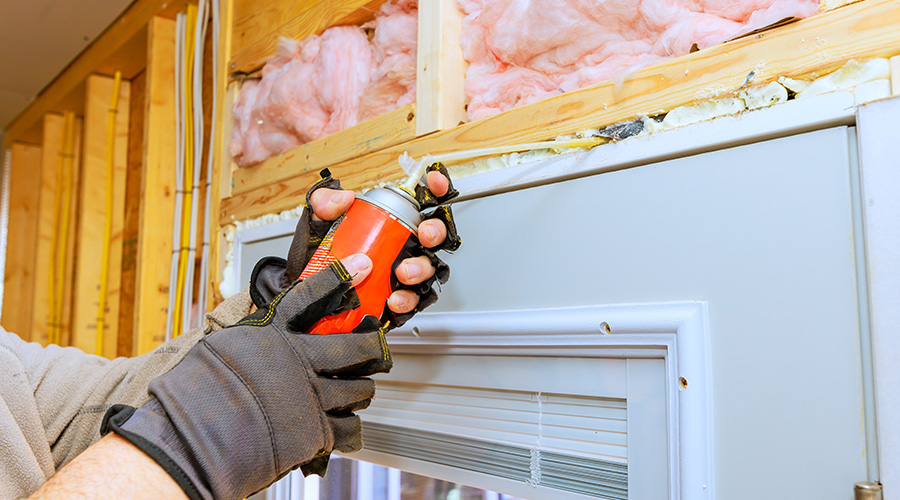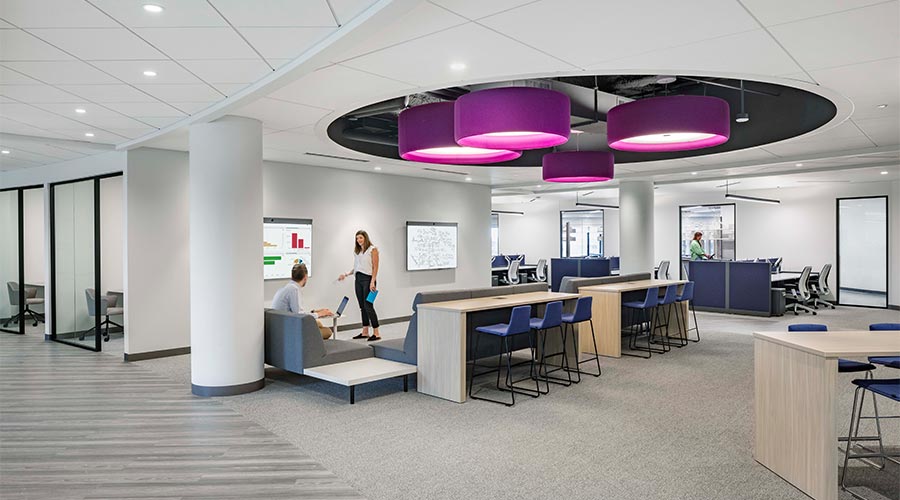How to Overcome Disruption in Building Projects
Supply chain challenges and increasing material costs have thrown many buildout and construction projects into chaos. Here are some tips on ensure projects run smoothly.
The ongoing pandemic has impacted many industries across the globe, including the design, architecture, engineering, construction, and facility management professions. Between increased demand, heightened inflation, supply chain delays, and the labor shortage, industry professionals are facing multiple layers of challenges throughout project development. Below, we explore the state of the industry and discuss best practices for overcoming the evolving circumstances surrounding buildout disruption.
The Current Landscape
The 2022 Architectural, Engineering Consultants and Related Services Global Market Report revealed that the market is expected to grow from $1290.07 billion in 2021 to $1416.90 billion in 2022 at a compound annual growth rate (CAGR) of 9.8 percent. There is a huge demand for work, which is a double-edged sword when it comes to executing projects. On one hand, it is great that many owners are looking to build so there isn’t a shortage of work. The challenge is that everyone, from professional service firms to manufacturers, are having a hard time sourcing the products to meet the demand.
When the COVID-19 pandemic hit, the industry went from boom, to bust, to boom, very quickly. We have had recessions in the past where the profession suffered, but the bounce back has never been this fast. Especially coming out of the pandemic, the industry went from cutting down firms to half size to being desperate to hire people with a severe shortage in the talent pool.
Supply Chain Obstacles and Shifting Timelines
Currently, there are many setbacks in project timelines due to supply chain delays and product price increases. Products specified by architects and engineers such as HVAC equipment, roofing materials, and concrete, are suddenly unavailable. In turn, the original price products are quoted for changes quickly and the cost oftentimes increases drastically. The product pricing increase causes budget setbacks and other ramifications that can significantly delay project timelines.
Buildout schedules are being stretched to the maximum which impacts overall budgets and teams. For example, if a project has a budget of $10 million, by the time bidding comes, that budget could be relatively unattainable due to increased pricing on products and materials. Permits are taking as long as eight to 10 months to get approved, bidding processes are delayed, and project milestones can blow by.
Managing Client Expectations
Facility managers expect design team to be upfront and honest throughout the whole process from start to finish. If the project teams sets expectations that are overly optimistic and unrealistic due to the labor shortages and supply chain disruptions, the owners will understandably be upset when deadlines aren’t met. However, if the design team is transparent about foreseeable obstacles, reasonable timelines, and realistic budgeting, owners are more likely to be receptive to potential challenges that may arise during the building process.
For the design team, it is important to have back-up plans for when inevitable challenges arise. From planning for proposals in the case of setbacks, looking at alternative materials to prepare for shortages, or brainstorming ways to pivot and cutback elsewhere if the budgets tighten, preparing the team for various strategies will help offset any surprises down the line.
Team-Building and Product Preparation
One solution is to get all stakeholders involved as early in the process as possible. Once a project has begun, it’s important to ask: Can a contractor be brought on early? Can a strong regional contractor that has ties to subcontractors be secured? Building a strong team from an early point has many advantages, one of which is having everyone help shape the project from conception to completion, which helps streamline the entire process. If the quantity of materials needed is known, order them early. For example, if the project is 30 retail stores and the project team knows each store needs 10 HVAC units, make sure they're secured as soon as possible to battle those price increases and supply chain delays. Collaboration and communication is key to securing the right team and right products for the build.
A New Era of Industry-Oriented Technology
Although the pandemic has given new challenges to the design, construction, and facility management industries, it is not all grim. Augmented Reality (AR), Quick Response (QR) technology, and Virtual Reality (VR) advancements have allowed for continued work even while we experience disruptions in the industry. AR, QR, and VR technologies allow us to try new things, experiment with new materials, and experience virtual simulations of projects that may not be ready for physical walk-throughs yet. Pre-pandemic, the industry was a bit hesitant to adopt new technologies as many people had been set in their ways and reluctant to change. The pandemic opened up a new arena of opportunities in the technology space, and that has really benefited the industry as a whole.
The industry overall is also becoming more personal than it was pre-pandemic. Stakeholders are receptive to being more involved and processes are being streamlined in new ways. Outside of a face-to-face meeting, we used to dial in to conference calls via our phones. Today, with technologies like Microsoft Teams and Zoom, when in-person meetings are not possible, we can still sit down and speak to each other face to face through tools that use webcam conferencing. We have realized that traveling for in-person meetings isn’t as necessary as it used to be, which has ultimately led to cutting down business travel time and made room for a stronger work-life balance in the profession. Collaborative technology allows us to save both money and time which are crucial considerations during any project phase.
Overcoming the challenges of buildout disruption is a hard task, but not impossible. By monitoring the current landscape of the industry, being aware of supply chain obstacles and shifting timelines, managing expectations, preparing for projects ahead of time, and integrating new industry-oriented technologies, professionals can better prepare themselves for buildout disruption. This is certainly not the last time we will face challenges in this industry, but being confident in our tools to help navigate these obstacles will help us ensure optimal project outcomes and client success.
Jeffrey Hill, AIA, is director of SBLM Architects’ Dallas studio.
Related Topics:












